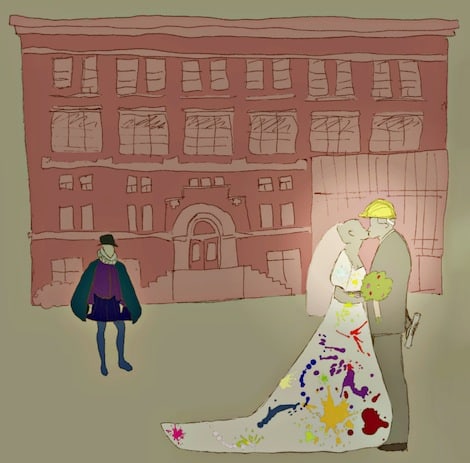The 2013–2014 academic year has seen a significant shift in the Department of Art, with the year culminating in a divorce of the visual studies programfrom that of art history. A move that materialised in early 2013, result in the Department of Art now refiguring itself as the history of art department, with visual studies joining the Daniels Faculty. While many note the wise and strategic decision of the Daniels move, what will become of the history of art department and whether this is a matter of concern are some of the questions being raised.

SIMONE SANTERRE/THE VARSITY
According to the associate chair of the undergraduate Department of Art, Jordan Bear, the division of the department has been in the works for a number of years and “takes into account the particular needs of [the visual studies] program built around studio courses.” Professor Philip Sohm also notes that the art history and visual studies programs had little in common other than a few connections between the contemporary and modernist courses offered. Hence, the split allows visual studies students to utilize the variety of resources that Daniels has to offer, which the Faculty of Arts & Science could not.
Glenn Loney, Associate registrar of the Faculty of Arts & Sciences, says that from his perspective the split is largely beneficial. Problems regarding enrolment into small visual studies classes can now be handled by a more knowledgeable Daniels faculty and will not plague the Faculty of Arts & Science any longer. In addition, the first-year class enrolling directly into visual studies will streamline the academic and theory oriented identity of the history of art department, which prior to the split had little to no overlaps with the visual studies programme.
Professor Bear notes that key components of the history of art program remain the same, and occupy the same place in the Faculty of Arts & Science as it did before, making the shift seamless.
Third year visual studies student, Julia Gasenzer, agrees with this, having taken several art history courses. She says that most students in the department haven’t even noticed the shift, and that perhaps the benefits will be better seen in the future. Additionally, she wonders whether the immediate effect will be largely beneficial to prospective students, as the Daniels faculty becomes a first entry division.
When looking back, professor Sohm recalls the significant proportions of visual studies students in art history classes and the diverse perspectives they brought, hoping that the split will still enable this inter-disciplinary interaction. Catherine Heard, a professor in the visual studies department, shares her past experiences working in other universities’ art departments and highlights the close and diverse social and professional connections that were facilitated as an invaluable part of working down the hall from art historians.
The overall optimism, presented particularly by faculty and administration with few expressions of concern, lessens the notion that the new and smaller history of art department is now vulnerable. Professor Sohm notes that since his arrival to the university 30 years ago, enrolment numbers within the program has only increased. Stand-alone operation for the department will streamline the program and allow those students who are interested to mingle within a like-minded and now tight-knit community. Professor Bear too concludes by highlighting that though the shift is not one to be concerned with, as major components and constituencies of the department will remain the same, this is definitely something that students should be aware of.

